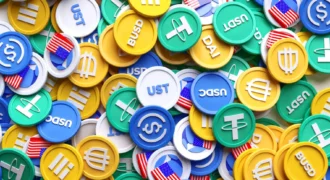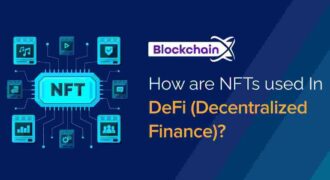As blockchain technology and decentralized applications (dApps) expand, the way we store, manage, and interact with digital assets has evolved. At the heart of this evolution lies the Web3 wallet — the essential bridge between users and the decentralized internet.
Whether you’re trading cryptocurrencies, exploring NFTs, or participating in decentralized finance (DeFi), your Web3 wallet is more than a storage tool; it’s your identity, gateway, and security system in a decentralized world. But what exactly are Web3 wallets, and how do they differ from traditional crypto wallets? Let’s break it down.
What Is a Web3 Wallet?
A Web3 wallet is a digital wallet designed specifically for interacting with blockchain networks and decentralized applications. Unlike traditional cryptocurrency wallets, which primarily store coins and tokens, Web3 wallets provide:
- Access to dApps: From DeFi platforms to NFT marketplaces.
- Secure transaction signing: Without relying on centralized intermediaries.
- Identity management: Acting as your digital passport in the decentralized ecosystem.
Think of it as your personal key to the Web3 universe — one that allows you to send, receive, stake, and participate in governance — all without intermediaries.
Types of Web3 Wallets
Web3 wallets come in various forms, each designed to meet different needs:
1. Hot Wallets
These are connected to the internet, making them convenient for daily transactions. Examples include:
- Browser Extensions: MetaMask, Phantom, and Brave Wallet.
- Mobile Wallets: Trust Wallet, Rainbow Wallet.
Pros:
- Easy access to dApps.
- Convenient for active trading and NFT interaction.
Cons:
- Susceptible to hacking if security practices are weak.
- Private keys stored online can be targeted by cyberattacks.
2. Cold Wallets
Cold wallets are offline wallets, ideal for long-term storage of digital assets. Examples:
- Hardware Wallets: Ledger, Trezor.
- Paper Wallets: Private keys printed or written on physical media.
Pros:
- Highly secure against online attacks.
- Best for storing significant crypto holdings.
Cons:
- Less convenient for frequent transactions.
- Risk of physical loss or damage.
3. Custodial vs. Non-Custodial Wallets
- Custodial Wallets: Managed by third parties (like exchanges). Users trust the provider to secure assets.
- Non-Custodial Wallets: Users retain full control of private keys, embodying true decentralization.
In the Web3 world, non-custodial wallets are preferred because they align with the principles of self-sovereignty and trustless interactions.
How Web3 Wallets Work
Web3 wallets operate using public and private key cryptography:
- Public Key: Your wallet address, which you can share to receive funds.
- Private Key: A secret code that authorizes transactions — never share this.
When interacting with a dApp or making a transaction, your wallet signs the request using your private key. The blockchain network then verifies the signature, ensuring authenticity without revealing your private key.
Additionally, many wallets now support seed phrases — a 12-24 word mnemonic that allows you to restore access if your device is lost or stolen.
Key Features of Web3 Wallets
1. dApp Integration
Web3 wallets enable seamless access to decentralized applications. From lending platforms like Aave to NFT marketplaces like OpenSea, your wallet serves as both identity and access pass.
2. Multi-Chain Support
Modern wallets often support multiple blockchains — Ethereum, Solana, Binance Smart Chain — allowing users to manage diverse assets from a single interface.
3. Token Management
Beyond cryptocurrencies, wallets handle ERC-20, BEP-20, and NFT standards, providing a centralized dashboard for a decentralized world.
4. Security and Privacy
- Non-custodial wallets ensure user-controlled security.
- Advanced wallets may integrate biometric authentication, hardware key support, and encryption for enhanced safety.
5. Governance Participation
Many wallets allow users to vote on protocol changes and participate in DAO governance directly, transforming wallets into tools for active community engagement.
Why Web3 Wallets Are Critical for the Decentralized Internet
- Ownership and Control
In Web3, you own your assets. Wallets ensure that private keys — and therefore ownership — remain in your hands, not a centralized platform. - Security and Transparency
Blockchain transactions are immutable. Web3 wallets ensure secure signing and verification, while keeping activities private yet auditable. - Accessibility and Inclusion
Anyone with a wallet can access global financial systems, NFT marketplaces, and decentralized applications — often without traditional banking infrastructure. - Interoperability
Web3 wallets connect seamlessly with multiple networks and applications, making it easier to participate in cross-chain ecosystems.
Best Practices for Web3 Wallet Users
To maximize security and usability:
- Never share your private key or seed phrase.
- Use hardware wallets for large holdings.
- Enable two-factor authentication where possible.
- Regularly update software to patch vulnerabilities.
- Only interact with trusted dApps to avoid phishing or malicious contracts.
The Future of Web3 Wallets
Web3 wallets are evolving rapidly:
- Smart Wallets: Wallets with integrated AI for gas optimization, transaction batching, and predictive analytics.
- Social Recovery Wallets: Using trusted contacts or networks to recover lost keys.
- Multi-Signature Wallets: Requiring multiple approvals for high-value transactions, enhancing security.
- Integrated DeFi Wallets: Directly connecting to lending, staking, and yield farming platforms from a single interface.
These innovations are making wallets not just storage tools, but central hubs for managing identity, assets, and participation in the decentralized economy.
Conclusion
Web3 wallets are more than a technical necessity — they are the foundation of a decentralized internet. By giving users ownership, security, and direct access to dApps, they enable the shift from centralized platforms to trustless, self-sovereign ecosystems.
Whether you’re an NFT collector, a DeFi enthusiast, or a crypto investor, understanding and using a Web3 wallet is the first step in navigating the decentralized world.
The future of digital finance, social networks, and governance is here — and it starts with your wallet.










